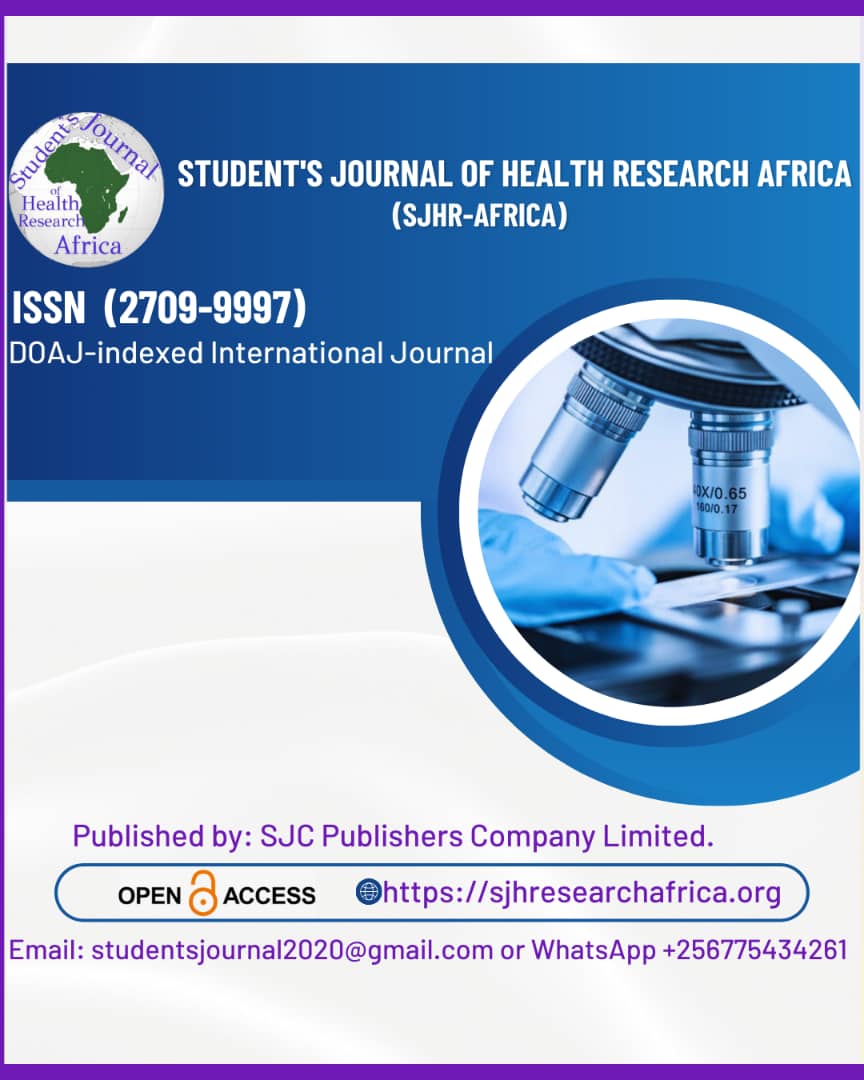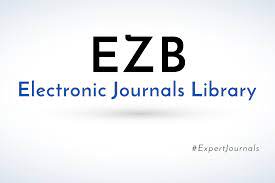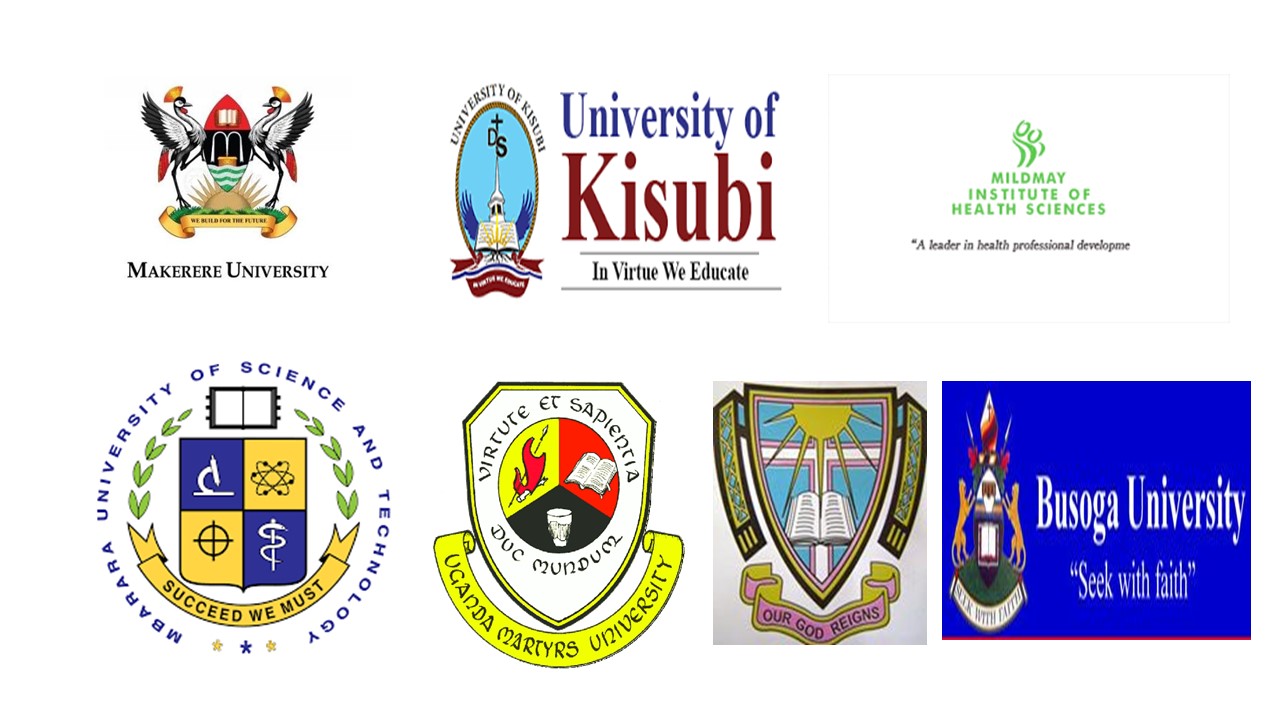A cross-sectional study on the prevalence of different types of anemias in pregnant women in a rural tertiary care center.
DOI:
https://doi.org/10.51168/sjhrafrica.v6i9.2043Keywords:
Anemia, Pregnancy, Iron deficiency, Folate deficiencyAbstract
Background:
Anemia during pregnancy is a major public health concern, especially in rural areas of developing countries, and is associated with adverse maternal and fetal outcomes. Iron deficiency anemia (IDA) is the most common type, though folate and vitamin B12 deficiencies also contribute. This study assessed the prevalence and distribution of different anemia types among pregnant women in a rural tertiary care setting.
Materials and Methods:
A cross-sectional study was conducted over 12 months (June 2024–May 2025) at the Department of Pathology and Department of Obstetrics and Gynecology, NRI Institute of Medical Sciences, Visakhapatnam. A total of 150 pregnant women aged 18–40 years with anemia were included. Data were collected from complete blood picture profiles, hemoglobin levels, and nutritional markers, including serum iron, ferritin, folate, and vitamin B12. Statistical analysis was performed using SPSS.
Results:
Most participants were aged 21–25 years (46%), followed by 26–30 years (24%), 18–20 years (20%), and 31–35 years (9.3%). Iron deficiency anemia was the predominant type (85.23%), followed by vitamin B12 deficiency (10.72%) and folate deficiency (4.69%). Severe anemia (Hb <7 g/dL) was exclusively due to IDA, while B12 and folate deficiencies were more frequent in mild anemia cases. Hematological and biochemical findings were consistent with these nutritional deficiencies. Higher prevalence was observed in women with greater parity and lower socioeconomic status.
Conclusion:
Iron deficiency overwhelmingly dominates anemia among pregnant women in rural India, with vitamin B12 and folate deficiencies contributing mainly to mild cases, particularly in multiparous women and those of lower socioeconomic status.
Recommendations:
Strengthened antenatal screening, nutritional counseling, and timely supplementation with iron, vitamin B12, and folate are essential to reduce maternal anemia and improve pregnancy outcomes.
References
World Health Organization: WHO, World Health Organization: WHO. Anaemia.2023. Available from:https://www.who.int/news-room/fact-sheets/detail/anaemia
Suryanarayana R, Chandrappa M, Santhuram AN, Prathima S, Sheela SR. Prospective study on the prevalence of anemia in pregnant women and its outcome: A community-based study. J Family Med Prim Care. 2017;6(4):739-43. https://doi.org/10.4103/jfmpc.jfmpc_33_17
Benson CS, Shah A, Frise MC, Frise CJ. Iron deficiency anaemia in pregnancy: A contemporary review. Obstet Med. 2021 Jun;14(2):67-76. https://doi.org/10.1177/1753495X20932426
Mamme NY, Roba HS, Fite MB, Asefa G, Abrahim J, Yuya M, et al. Serum folate deficiency and associated factors among pregnant women in Haramaya District, Eastern Ethiopia: a community-based study. BMJ Open. 2023 May 8;13(5): e068076. Available from:https://pubmed.ncbi.nlm.nih.gov/37156586/ https://doi.org/10.1136/bmjopen-2022-068076
Finkelstein JL, Fothergill A, Krisher JT, Thomas T, Kurpad AV, Dwarkanath P. Maternal vitamin B12 deficiency and perinatal outcomes in southern India. PLoS One. 2021;16(4):e0248145. Available from: https://pubmed.ncbi.nlm.nih.gov/33822790 https://doi.org/10.1371/journal.pone.0248145
Jain D, Atmapoojya P, Colah R, Lodha P. Sickle cell disease and pregnancy. Mediterr J Hematol Infect Dis. 2019;11(1):e2019040. Available from: https://pubmed.ncbi.nlm.nih.gov/31308916/ https://doi.org/10.4084/mjhid.2019.040
Ruangvutilert P, Phatihattakorn C, Yaiyiam C, Panchalee T. Pregnancy outcomes among women affected with thalassemia traits. Arch Gynecol Obstet. 2023 Feb;307(2):431-8. Available from: https://pubmed.ncbi.nlm.nih.gov/35347380/ https://doi.org/10.1007/s00404-022-06519-y
Tay SCK, Nani EA, Walana W. Parasitic infections and maternal anaemia among expectant mothers in the Dangme East District of Ghana. BMC Res Notes. 2017 Jan 3;10(1):3. Availablefrom: https://pubmed.ncbi.nlm.nih.gov/28057071/ https://doi.org/10.1186/s13104-016-2327-5
Pathak P, Kapil U, Yajnik CS, Kapoor SK, Dwivedi SN, Singh R. Iron, folate, and vitamin B12 stores among pregnant women in a rural area of Haryana State, India. Food Nutr Bull. 2007 Dec;28(4):435-8. doi: 10.1177/156482650702800409. PMID: 18274171. https://doi.org/10.1177/156482650702800409
Iron Deficiency Anaemia in Pregnancy: Developed Versus Developing Countries.EMJ Hematol. 2018;6[1]:101-109. https://doi.org/10.33590/emjhematol/10314911
Available from: https://www.emjreviews.com/wp-content /uploads /2018 /07/Iron-Deficiency-Anaemia-in-Pregnancy.pdf.
Finkelstein JL, Kurpad AV, Duggan C, etal. Anaemia and iron deficiency in pregnancy and adverse perinatal outcomes in Southern India. Eur J Clin Nutr. 2020;74(4):721-31. PMCID: PMC10122513.
Anaemia in women and children. [cited 2025 Aug 11]. Available from: https://www.who.int/data/gho/data/themes/topics/anaemia_in_women_and_children
Sood, S. K. et al.(2020).Prevalence and determinants of anemia among Indian women.
Indian Journal of Public Health, 64(3), 224-229.
Gupta, P.M., et al. (2019).Micronutrient deficiencies and anemia in the Indian context.
The Lancet Global Health, 7(9), e1140-e1148.
Green, R.,&Kinsella, L.J.(2022).Current concepts in the diagnosis of megaloblastic anemias. Blood Reviews, 46, 100742.
Camaschella C. Iron-deficiency anemia. N Engl J Med. 2015 May 7;372(19):1832-43. doi: 10.1056/NEJMra1401038. PMID: 25946282. https://doi.org/10.1056/NEJMra1401038
O'Leary F, Samman S. Vitamin B12 in health and disease. Nutrients. 2010 Mar;2(3):299-316. doi: 10.3390/nu2030299. Epub 2010 Mar 5. PMID: 22254022; PMCID: PMC3257642. https://doi.org/10.3390/nu2030299
World Health Organization. (2017). Assessing the iron status of populations: including literature reviews (2nd ed.).
Antony,A.C.(2018).Megaloblastic anemias in Hematology: Basic Principles and Practice (7th ed.). https://doi.org/10.1016/B978-0-323-35762-3.00039-1
Toteja GS, Singh P, Dhillon BS, Saxena BN, Ahmed FU, Singh RP, Prakash B, Vijayaraghavan K, Singh Y, Rauf A, Sarma UC, Gandhi S, Behl L, Mukherjee K, Swami SS, Meru V, Chandra P, Chandrawati, Mohan U. Prevalence of anemia among pregnant women and adolescent girls in 16 districts of India. Food Nutr Bull. 2006 Dec;27(4):311-5. doi: 10.1177/156482650602700405. PMID: 17209473. https://doi.org/10.1177/156482650602700405
Balarajan Y, Ramakrishnan U, Özaltin E, Shankar AH, Subramanian S. Anaemia in low-income and middle-income countries. The Lancet. 2011 Dec [cited 2025 Aug 11];378(9809):2123-35. Available from: https://linkinghub.elsevier.com/retrieve/pii/S014067361062304 https://doi.org/10.1016/S0140-6736(10)62304-5
Downloads
Published
How to Cite
Issue
Section
License
Copyright (c) 2025 Ms. Harika Peethambaram, Dr. Hiranmaye Mokhasunavisu, Dr. Ramya Sindhura Tammireddi , Dr.Anusha Kollapu, Dr. L. Jhansi Rani , Dr. Atla Bhagyalakshmi

This work is licensed under a Creative Commons Attribution-NonCommercial-NoDerivatives 4.0 International License.





















